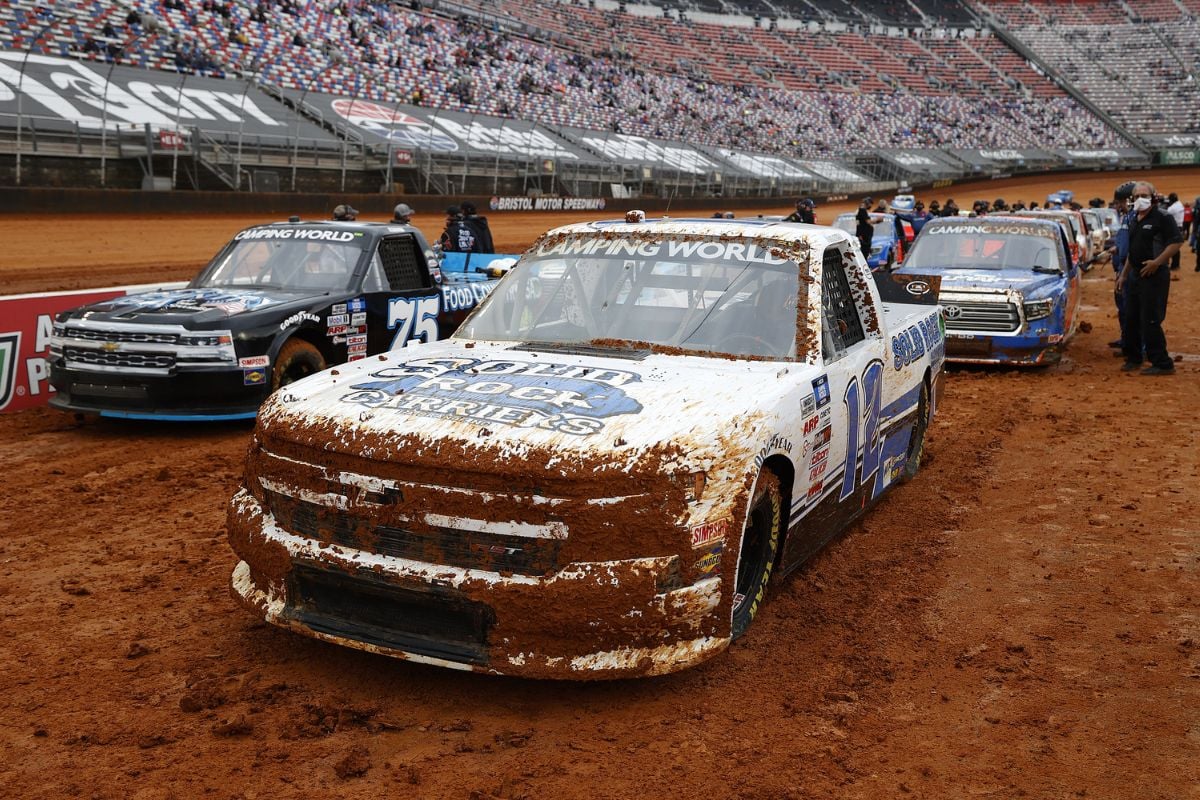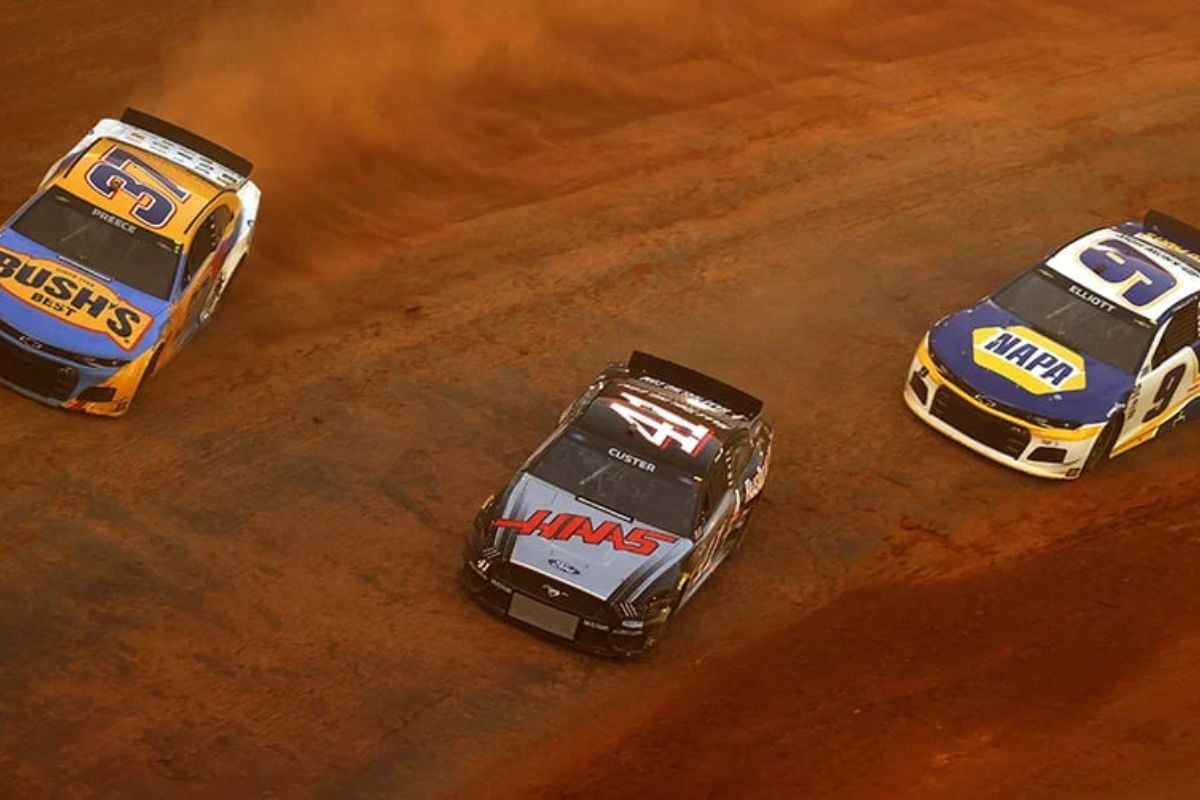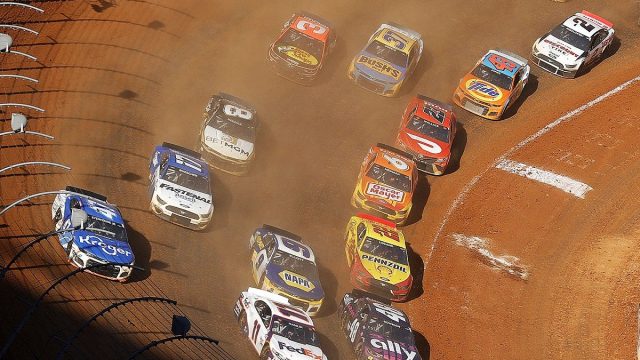NASCAR’s Bristol Dirt Formula Faces Backlash: As NASCAR gears up for the upcoming Bristol Dirt Race, echoes of the recent Phoenix event linger in the air. The short-track package implemented at Phoenix International Raceway sparked a wave of mixed reactions among the drivers and fans, prompting scrutiny of NASCAR’s decision-making process.
With the Bristol dirt track event on the horizon, questions arise regarding the potential for a similar outcome. As NASCAR contemplates adjustments to horsepower and regulations, the anticipation and apprehension surrounding this unconventional formula intensify.
Will history repeat itself, or will Bristol Dirt pave the way for a new chapter in NASCAR’s racing legacy?
Mixed Reactions to NASCAR’s Short-Track Package in Phoenix
In the aftermath of NASCAR’s introduction of the short-track package at Phoenix Raceway, divergent opinions among the drivers highlighted the contrasting perspectives on the changes aimed at enhancing competition and race dynamics. While the package intended to improve maneuverability and increase passing opportunities, it faced criticism from the drivers, with negative reactions overshadowing the positive aspects. Bubba Wallace’s vocal frustration, laced with explicit language during the race, showed the discontent that some drivers felt with the new setup.
Some drivers, however, saw potential in the changes and expressed optimism about the package’s ability to shake up the racing dynamics. The mixed reactions from the drivers created a buzz within the NASCAR community, with fans and experts speculating about the implications of the short-track package on future races. As attention shifts to the upcoming Bristol race, the feedback from Phoenix has set the stage for further evaluation of the package’s effectiveness on different track configurations.

Challenges and Expectations for Bristol Race
Following the contrasting reactions to NASCAR’s short-track package at Phoenix Raceway, the upcoming Bristol race poses new challenges and expectations for all the drivers and fans.
The race at Bristol will feature a newly paved concrete surface, adding uncertainty after the mixed reviews at Phoenix. Drivers have already expressed their discontent with the short-track package, suggesting potential difficulties on Bristol’s tight, half-mile track.
The tire situation for Bristol remains consistent with the previous races, but the adjusted aero package could present additional hurdles. Notably, Bob Pockrass shed light on the tire specifics and the application of resin in targeted areas of the turns, indicating a meticulous approach to track preparation.
As anticipation builds for the Bristol race, stakeholders are bracing for an event that could either showcase NASCAR’s adaptability or reignite concerns from the Phoenix race. The Bristol event promises to be a pivotal moment that could either reassure or challenge the NASCAR community’s expectations.
NASCAR Contemplates Horsepower Adjustments
NASCAR is deliberating potential horsepower adjustments in response to mounting pressure from the racing teams. The current 670 HP limit may be increased to 750 HP, with discussions also encompassing the prospect of reverting to the once-familiar 900 HP standard.
Brandon Thomas, NASCAR’s vice president of vehicle design, likened the situation to an optimized mug, emphasizing the intricate details at play. As racing teams gear up for the 2024 challenge in Bristol, they must navigate the complexities of the aero package and potential horsepower adjustments.
The proposed changes reflect a delicate balance between performance and safety, requiring thorough analysis and consideration. Adjusting horsepower levels can significantly impact race outcomes, influencing speed, handling, and overall competition dynamics.
NASCAR’s decision will shape the future of racing, with implications for the teams, drivers, and fans. The sport stands at a critical decision, where horsepower adjustments could redefine the racing landscape and set the stage for a new era of competition.
News in Brief
As NASCAR prepares for the Bristol Dirt Race, echoes of mixed reactions from the recent Phoenix event linger. The short-track package faced divergent opinions, with drivers like Bubba Wallace expressing frustration. Ahead of Bristol, concerns arise over the newly paved surface and potential challenges with the adjusted aero package. NASCAR contemplates horsepower adjustments, with discussions ranging from 670 HP to a potential return to 900 HP. Brandon Thomas highlights the complexities involved, emphasizing the need for careful consideration. The decision could reshape racing dynamics, impacting speed, handling, and overall competition. As anticipation builds for Bristol, the NASCAR community awaits a pivotal moment that could redefine the sport’s future.

Our Reader’s Queries
Q. How did they put dirt on Bristol Speedway?
A. In a remarkable feat, it required a span of two weeks for a fleet of over 2,000 trucks to transport an astounding 23,000 cubic yards of red clay, weighing approximately 30,000 tons, equivalent to the weight of two Brooklyn Bridges. The meticulous process involved the careful layering of four tiers of clay atop a foundation of sawdust, orchestrated by bulldozers and graders meticulously guided by a GPS system boasting an impressive accuracy rate of within five-hundredths of an inch.
Q. What is the format for the Bristol Dirt Race?
A. Each heat consists of 15 laps, with the initial race commencing at 6 p.m. ET on FS2, followed by subsequent heats at 6:15 p.m. ET, 6:30 p.m. ET, and 6:45 p.m. ET. Heat assignments and lineups will be established through a random draw, administered based on team owner points in sequential order.
Q. Is the Bristol race on dirt?
A. Bristol Motor Speedway in Tennessee is bidding farewell to its dirt track configuration. After three years of utilizing a dirt surface for its NASCAR races, the iconic short track will return to its traditional concrete surface for both NASCAR weekends in 2024. Bristol’s high-banked circuit was covered with dirt in 2021, marking a unique period in the track’s storied history.
Q. How much dirt is on a NASCAR dirt track?
A. To provide a more vivid illustration, the quantity equates to a staggering 149,851 kegs of beer. However, despite its seemingly straightforward nature, the grand total amounted to over 23,000 cubic yards of dirt. “It sounds so simple,” remarked Steve Swift, Speedway Motorsports’ senior vice president of operations and development. “Doesn’t it?”
ALSO READ: Bristol Motor Speedway’s New Deal: Swaggerty’s Farm Takes the Lead
